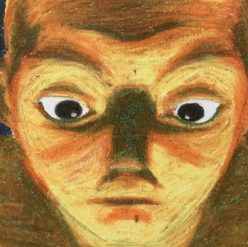One of the comments on the Douban website about Marvel’s TV series Daredevil, says it’s “such a heart-breaking story that the hero is either being beaten or on the way to be beaten.” As a superhero show, Daredevil not only comes with a hero who doesn’t really possess an impressive superpower, but also spends a lot of time on Matt Murdock, the human side of Daredevil. When Matt’s best friend Foggy finds out Matt is the Daredevil, the episode is full of Matt and Foggy’s conversation about how to keep their friendship and their career going. Daredevil, Matt, sits on the couch in pajamas, his blind eyes look so blank and helpless without glasses, filled with tears because he might lose his only friend. This may not sound exciting for a superhero show, but somehow this show is rated 8.7/10 on IMDb, nominated for 5 Emmys, with a lot of comments saying “it’s one of the best superhero shows ever.”
We tend to believe the reason why people like superhero stories is that they like to see villains getting beaten by the heroes with their amazing powers, but as we can see, the images of superhero have been evolving after they were first created in the 1930s. From mythological heroes like Superman and Wonder Woman, to nationalist heroes like Captain America, which was deployed by government and western media commentators (Jason Dittmer, 2013), then we welcomed the “silver age” of superhero comics. After Frank Miller, who later created Batman: The Dark Knight Return while Alan Moore was producing Watchmen, became the series writer of Daredevil in 1981, he gave the stories more psychological and dramatic force by depicting a more realistic world than simpler tales of past comics and by giving the readers characters with recognisable flaws (Peter Sanderson, 1996), which heavily influenced the image of Daredevil we see in today’s comics as well as in the TV series. The portrait of Daredevil as a true to life human instead of a god-like hero with a cape floating in the sky in the show built the strong connection between the audiences and the character, and the emotions bursts out at the end of Season 3, when Daredevil finally beat the villain Kingpin to the ground. He shouted at Kingpin, lifting his mask and stared at the villain with his blind eyes that can’t even focus, saying ‘I beat you’, so desperately that as if he’s the one who lost because this battle has cost his lover, his friends and his life. There’s no cool visual effects, no exciting music, he wasn’t even wearing the Daredevil suit, but the scene is way more powerful than most heroic triumphs. Hence, we can see superheroes are not only adolescent wish fulfillment, but also spread beyond comics to be taken up by popular culture more generally as the exemplar of justice, (Jason, Bainbridge, 2009) with the characters being created with more depth and realism in contemporary media.
The opportunity of building a complete and authentic character comes from the form of TV series. Stan Lee once said (Lee and Mair, 2003), one of the best rules of thumb was, create the kind of characters that work well in a dramatic television series. And that obviously works in reverse. Without the limit of time, the creators got to put every character in detail as in the original comics, thereby forcing them to struggle against their own flaws and passions as well as external adversaries (Peter Sanderson, 1996). More and more comics are made into TV shows today, not just Daredevil, other shows like Preacher, Marvel’s Legion also stand out as award winning creative works. With the increasing popularity of online TV platforms like Netflix, I believe the chance for us to see more compelling superheroes stories will increase in the future.
Bibliography
Dittmer, Jason (2013) Captain America and the nationalist superhero: metaphors, narratives, and geopolitics
Philadelphia, Pennsylvania: Temple University Press
Mazur, Dan and Danner, Alexander (2014) Comics: a global history, 1968 to the present
London: Thames and Hudson
Ndalianis, Angela (2009) The contemporary comic book superhero
New York: Routledge
Sanderson, Peter (1996) Marvel Universe
London: Virgin
